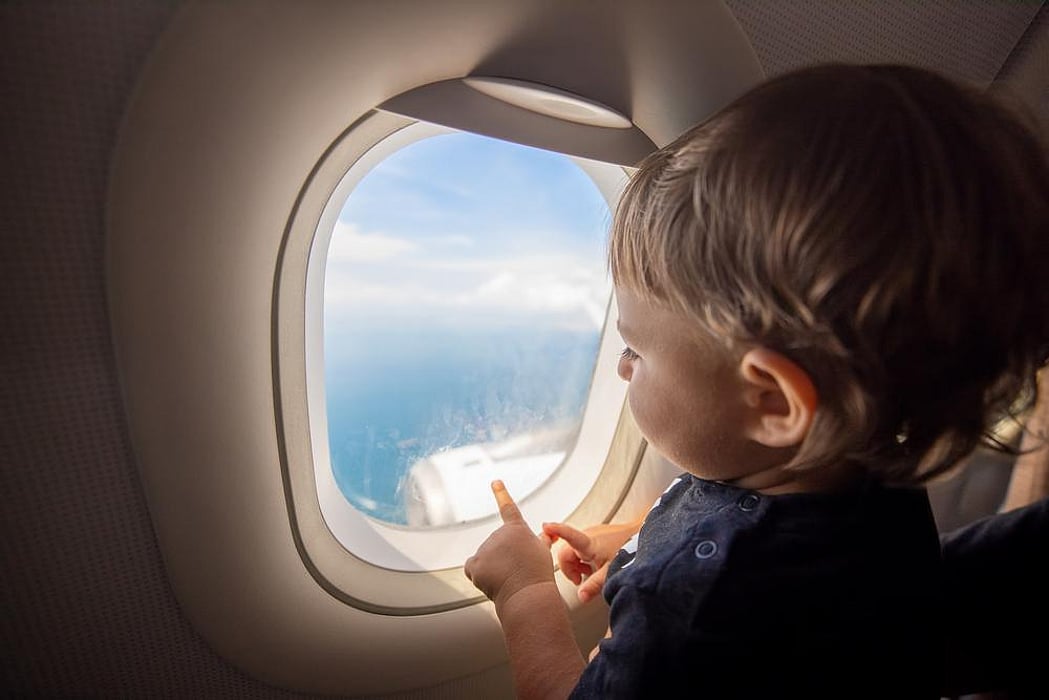Flying With a Toddler

We have great memories of our family trip to New Zealand, but the time when our one-and-a-half-year-old son started throwing a fit over Tahiti is not one of them. Flying with a toddler can be a trying experience, especially during a long trip. Even the world's most patient, most obedient child will at some point wonder why he has to spend so much time stuck in a little seat.
The good news is that a parent's worst fears almost never play out. Most toddlers manage to stay well-behaved for most of the flight. If your child does start complaining, you can expect to get more sympathy than glares from nearby passengers, especially if they've ever had to fly with kids of their own. Whether you're flying across the state or across the world, you can take steps to help your child stay safe and content.
Right flight, right seat
Everyone's more comfortable in a plane that isn't completely packed, and that included toddlers. You'll definitely feel better if the seat in front of your toddler happens to be empty. (If he decides he has to start kicking the seat, it's no big deal.) If possible, try avoiding peak flying times, especially Monday morning and Friday afternoon. Obviously, you'll need to choose a seat next to him. Ideally, one of you will have an aisle seat, making it easy for you both to get up and walk around as much as possible.
If your child is young enough -- two is the usual cutoff -- the airline might allow him to fly on your lap. While this is a money saver, it's not especially comfortable for either of you, and it's not the safest way to travel. If money is an issue, ask the airline if they have discounts for young children. He'll be much more secure strapped into his own seat, especially if he's in a car seat or booster seat that's approved for air travel. To see if his seat is OK for an airplane, look for a label that says it is "certified for use in motor vehicles and aircraft." Keep in mind that it might not fit in the airplane seat if it's more than 16 inches wide. If you don't want to bring along your own seat, ask the airline if they have seats to provide.
Pack for success
You wouldn't dream of traveling anywhere with your toddler without the standard collection of diapers and wipes. But if you're spending a couple of hours or more on an airplane, you'll want some extra things to keep her amused and comfortable. Bring small toys and books -- at least one for every hour of the flight is a good rule of thumb. Try collecting a mix of familiar items and new things that will get her attention. If she has a favorite stuffed animal or blanket, of course you should bring it along. Airplanes can get a little cool, so make sure she has a sweater or something else warm to snuggle up in. You might want to go a little overboard on those diapers and wipes, just in case. And because you can't count on the airline to offer food or drinks that your child will actually want when she wants something to eat, throw in a few favorite snacks, too. You can't bring juice boxes through security, but you can always buy some at a newsstand by the gate.
Avoid airsickness
Even if your child has never been carsick, it's possible that the motion of the plane could upset her stomach. She's more likely to get motion sick if she's hungry, so give her a light snack before you get on board. You might also ask your pediatrician about Dramamine, an over-the-counter medication that can help prevent motion sickness. Dramamine has another feature: It can also make a child drowsy, which isn't necessarily the worst thing on a long flight. Since over-the-counter Dramamine is dosed for older children and adults, you'll have to check with your pediatrician to know what dose, if any, is recommended for your child.
Ear pain
Many parents worry that the pressure changes in an airplane will hurt their little one's ears. Fortunately, this fear is often unfounded. Many babies and toddlers sail through takeoffs and landings without a complaint. You can hedge your bet by giving her something to suck on during takeoff and descent. It isn't safe to give a young toddler hard candies or gums, so let her suck on a sippy cup, a bottle, or, if she still uses one, a pacifier. If your child is still breast feeding, that can help, too. If your child has a cold, you may want to try giving her a decongestant before the flight. It might help relieve some of the pressure on her ears and give you -- and everyone around you -- a better shot at a restful flight.
References
American Academy of Pediatrics. Flying with baby. http://www.healthychildren.org/English/safety-prevention/on-the-go/Pages/Flying-with-Baby.aspx
Federal Aviation Administration. Child safety on airplanes. http://www.faa.gov/passengers/fly_children/crs/
Nemours Foundation. Flying and your child's ears. http://kidshealth.org/parent/general/body/flying_ears.html
Related Posts
Good Oral Health Linked to Improved Survival in Head & Neck Cancer
FRIDAY, Sept. 22, 2023 (HealthDay News) -- For patients with head and neck...
FDA Warns of Rising Dangers of Unapproved Drug Tianeptine
WEDNESDAY, Feb. 23, 2022 (HealthDay News) -- The U.S. Food and Drug...
Los CDC dicen que cinco personas han sido hospitalizadas por salmonella vinculada con tortugas domésticas
VIERNES, 22 de julio de 2022 (HealthDay News) -- Unas minúsculas tortugas son la...
No le haga caso a la nueva tendencia de TikTok: comer bórax es peligroso
JUEVES, 17 de agosto de 2023 (HealthDay News) -- A pesar de lo que vea en...
